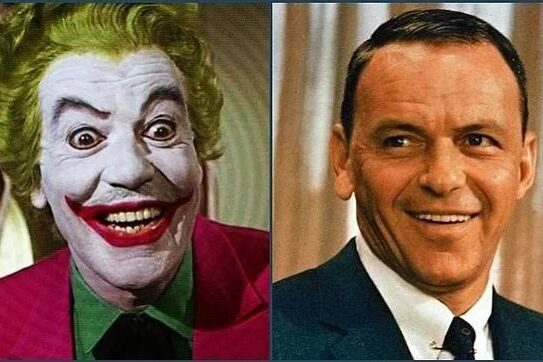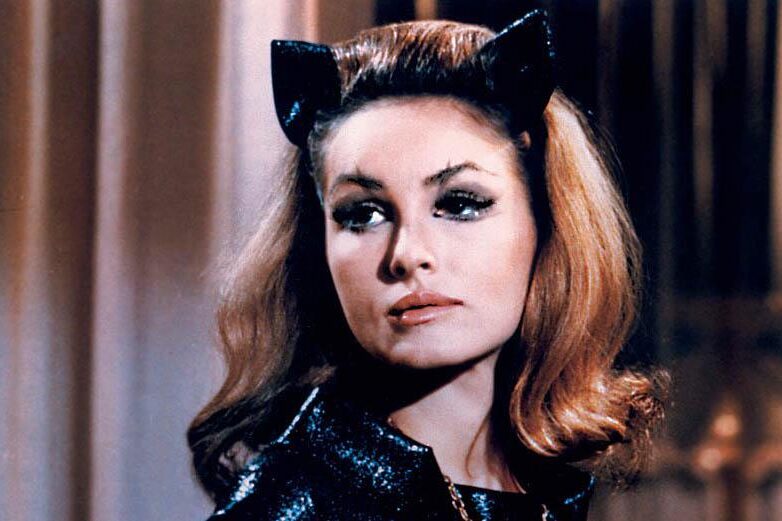1. Sinatra Wanted to Be the Joker

Frank Sinatra, one of America’s greatest crooners, actually tried to land the role of the Joker. According to production insiders, Sinatra “pleaded” with the producers to take on the role, not merely as a stunt, but to stretch his acting chops in a darker, more unsettling part. However, the producers ultimately decided against it, and the part went to Cesar Romero, who famously refused to shave his mustache and wound up with white makeup painted over it, another unforgettable show moment.
2. Batcave Entrance at Bronson Canyon

It might surprise you that the iconic Batcave tunnel seen in the 1960s Batman series wasn’t a fancy studio build, it was shot in Bronson Canyon in Los Angeles’ Griffith Park. The “cave” is actually a short tunnel, part of an old rock quarry turned natural filming spot. This public park later became legendary for its on-screen appearance, standing in for a secret lair that Batman and Robin rushed through in full costume.
3. Julie Newmar’s Party-Call Casting

Julie Newmar, the statuesque Catwoman, was a last-minute casting ace, brought in after producers met her at a private party. According to Newmar, the call came just three days before filming her first episode, while she was relaxing in New York with her brother and friends. As she said in Vanity Fair, “They called me three days before filming… My brother was visiting me in New York… The call came in and asked if I was interested in doing this television series.” Within days, she was in costume, leaping about sets ready to thrill the audience. She only appeared in 13 episodes across season 1 and 2 but left a lasting impact.
4. “Batusi” Was a Real Dance Move

You know the “Batusi”, that iconic arm‑crossing, finger‑to‑temples groove from the pilot episode. But did you know it was inspired by real‑life dances? The name riffs on the 1960s “Watusi,” a popular club dance at the time. Adam West once said he improvised it while riding in a car rehearsing his lines on the way to filming. Alternate lore credits dance instructor Arthur Murray, but West maintained it came organically in the moment.
5. Twice-a-Week Cliffhangers

Here’s a scheduling twist: Batman originally aired twice a week during Seasons 1 and 2, Wednesdays and Thursdays, and each week featured one two-part story ending on a cliffhanger. This was rare for prime‑time dramas, even in the ‘60s, and helped build momentum with viewers. Some weeks even featured a three-part arc for the Penguin, extending suspense and viewer engagement.
This rapid pace produced 34 episodes in season 1 and a whopping 60 in season 2, far more than the typical 25‑episode seasons of that era. It kept fans tuning in twice for every adventure. And when the series shifted to once‑a‑week in Season 3, the change was noticeable, viewership started to dip. The network had to rework the format entirely. But those two‑nights‑a‑week cliffhanger hooks? . It was a strategy that taught networks just how emotionally invested audiences could become.
6. Riddler’s Snug Jumpsuit

Frank Gorshin’s Riddler costume was famously tailored so tightly that it had to be stitched onto him directly. Designers opted for a skintight green jumpsuit with question marks, complete with knit cap and domino mask that hugged his face and body like a second skin. Crafted by Hollywood tailor Ernie Tarzier, tags inside even read “Frank Gorshiner September 1966,” confirming how customized it was. The tight fit meant wardrobe staff couldn’t simply dress him each day, the suit had to be pulled on and adjusted with each wear, and pried off carefully between scenes.
7. Egghead, Born for TV

Vincent Price’s Egghead was never borrowed from the comics, he was invented specifically for the show. In fact, the character has no comic book origins; creators William Dozier and Stanley Ralph Ross dreamed him up, and cast Price to bring him delightfully to life. Egghead appeared in several episodes, always plotting egg-themed crimes with witty wordplay and theatrical flair. Like stealing the Gotham City Charter or hosting on-set egg fights, the character reveled in being bizarrely creative, and absurdly fun to watch.
8. Eartha Kitt’s Feline Purr

In Season 3, Eartha Kitt stepped in as Catwoman, becoming one of the first Black villains in a major superhero show. Kitt arrived after Julie Newmar’s run and famously hadn’t even seen Newmar’s performance before diving into the part, determined to create her own version. Her Catwoman prowled in sleek black, purring cunning lines and planting her claws firmly in TV history. As a Black actress in 1967, her casting challenged norms. She refused to replicate Newmar’s approach, instead delivering a seductive and commanding performance all her own. That decision resonated, fans embraced her, critics took notice, and she paved the path for broader representation in genre television.
9. Batmobile = Lincoln Futura

The Batmobile was actually a 1955 Lincoln Futura concept car repainted and modified by George Barris. Originally shown at the Chicago Auto Show in pearl–blue white, it sat unused until Barris bought it from Ford for only $1 plus “valuable consideration” in 1959. With just three weeks to prep it for filming, Barris and his team added the bat-themed fins, red trim, and bubble canopy, turning it into the sleek Batmobile we know. After the show, the vehicle was sold at Barrett-Jackson in 2013 for approximately $4.62 million, proving that its legacy was far from fictional.
10. Seatbelt PSA with Batman & Robin

In 1966, shortly after “The Purr-fect Crime” aired, a brief PSA featuring Adam West and Burt Ward encouraged children (via the “Bat-belt”) to always buckle up. Robin famously asks, “Where’s the seatbelt?” and Batman responds with earnest safety advice. Contrary to popular myth, it wasn’t mandated by the government. Instead, producer William Dozier proactively added seat belts and used the PSA to promote safety, and simultaneously hype the show.
11. “Desmond Doomsday” = William Dozier’s Narrator Voice

The iconic narrator who was famously booming, dramatic, and cheeky was indeed producer William Dozier, speaking the lines but uncredited on-screen. Dozier humorously adopted the pseudonym Desmond Doomsday for narration credits on promotional materials, soundtrack albums, and in interviews, most notably in a 1966 Telescope bio/interview. His hallmark was the playful cliffhanger sign‑off: “Tune in tomorrow, same Bat‑time, same Bat‑channel!”
This story 11 Weird Facts You Didn’t Know About the Classic Batman TV Series was first published on Daily FETCH


